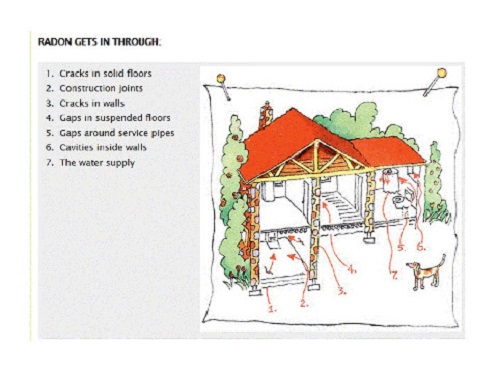Radon Dangers
Resolve to Test, Fix, and Save a Life in 2014

Most New Year’s resolutions involve our personal health — exercising more, eating better, losing weight, or quitting smoking. I’d like to suggest one that will protect your whole family’s health and increase your peace of mind. It’s easy, inexpensive, and you can do it while not missing a beat on any of your other resolutions. This year, the EPA is encouraging you to test your home for radon, the second-leading cause of lung cancer.
Radon is a radioactive gas that comes from the breakdown of natural uranium deposits in soil. Radon can seep in through the foundation and, without sufficient ventilation, build up to unsafe levels. Elevated radon levels have been found in homes all across the nation – in fact, elevated radon levels may be in your home, increasing you and your family’s risk of developing lung cancer. Based on the findings of the National Academy of Sciences, about 21,000 people die from radon-induced lung cancer each year. This makes radon the second-leading cause of lung cancer in our nation, and the number one cause of lung cancer for non-smokers.

EPA estimates that one in 15 U.S. homes has elevated radon levels. In some areas, one out of every two homes has high radon levels. In California, the Santa Barbara–Ventura area is known to have elevated levels due to the local geology. While any home anywhere can have elevated levels, it is particularly prudent to test if you live in this part of the state.
Testing is the first step toward protecting yourself and your family, and now is a great time to test. During the winter months, windows and doors are kept closed more than at other times of the year. This leads to test results that are closer to your home’s maximum levels – giving you a better idea of whether you and your family are at elevated risk from the danger of radon.
Do-it-yourself kits are available online and at most major hardware stores. You can also contact your state radon office for more testing assistance (for a list, go to epa.gov/radon) or call either 1 (800) SOS-Radon or (916) 449-5674. Certified radon professionals can also perform accurate and reliable radon tests.
If you find high levels in your home, fixing the problem is straightforward and costs about as much as most common home repairs. With proven techniques and time-tested, durable materials, most radon problems can be quickly fixed.
Taking action to test and fix high levels of radon gas is not only a strong investment for your family’s health, but also for your home. A home that has a system that reduces radon levels to acceptable levels can be a positive selling point when you put a house on the market. In many areas, disclosure of radon levels is a required part of real estate transactions. If you are house hunting, be sure to ask if the home has been tested for radon, whether or not it is required in your area. Also, if you are looking to build a new home, there are now effective and healthier radon-resistant construction techniques that home buyers can discuss with builders to reduce this health hazard.
Radon is a problem you can do something about. Resolve to test, fix, and save a life.
Jared Blumenfeld is the regional administrator for the U.S. EPA’s Pacific Southwest Region.



